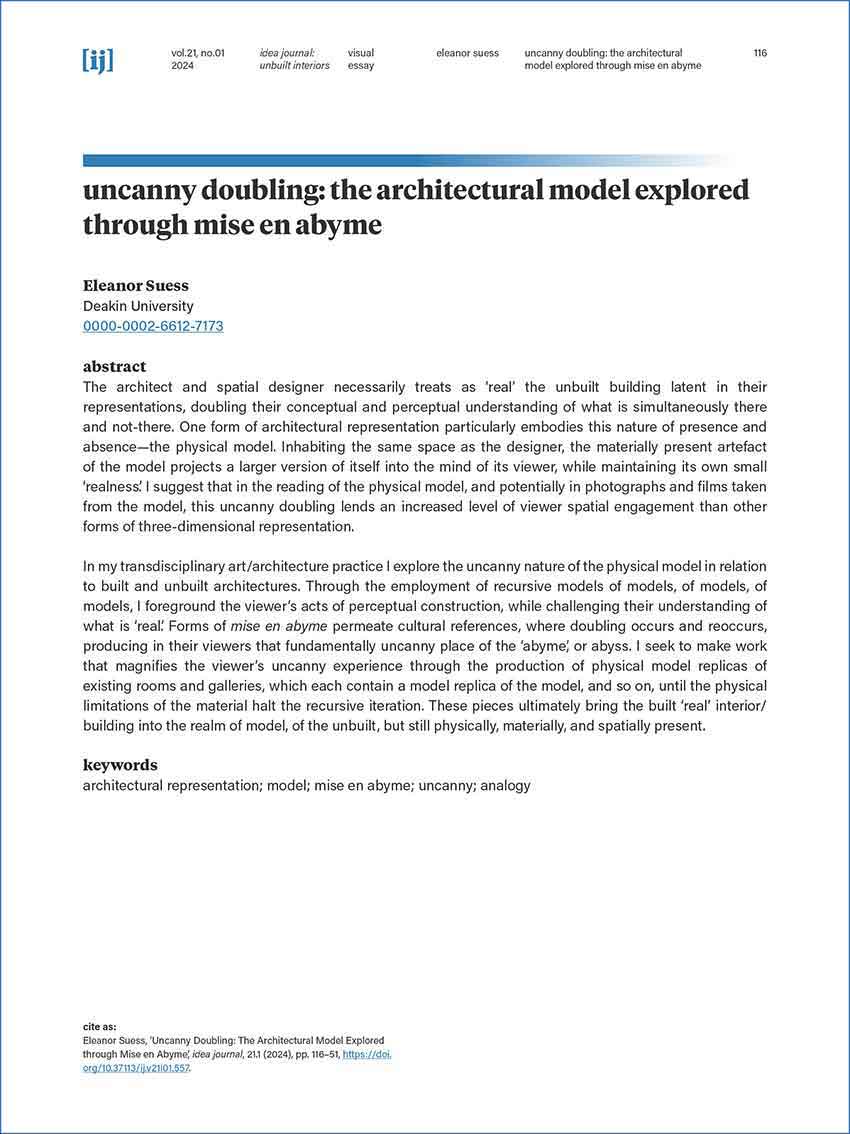Uncanny Doubling The Architectural Model Explored through Mise en Abyme
Main Article Content
Abstract
The architect and spatial designer necessarily treats as ‘real’ the unbuilt building latent in their representations, doubling their conceptual and perceptual understanding of what is simultaneously there and not-there. One form of architectural representation particularly embodies this nature of presence and absence—the physical model. Inhabiting the same space as the designer, the materially present artefact of the model projects a larger version of itself into the mind of its viewer, while maintaining its own small ‘realness’. I suggest that in the reading of the physical model, and potentially in photographs and films taken from the model, this uncanny doubling lends an increased level of viewer spatial engagement than other forms of three-dimensional representation.
In my transdisciplinary art/architecture practice I explore the uncanny nature of the physical model in relation to built and unbuilt architectures. Through the employment of recursive models of models, of models, of models, I foreground the viewer’s acts of perceptual construction, while challenging their understanding of what is ‘real’. Forms of mise en abyme permeate cultural references, where doubling occurs and reoccurs, producing in their viewers that fundamentally uncanny place of the ‘abyme’, or abyss. I seek to make work that magnifies the viewer’s uncanny experience through the production of physical model replicas of existing rooms and galleries, which each contain a model replica of the model, and so on, until the physical limitations of the material halt the recursive iteration. These pieces ultimately bring the built ‘real’ interior/building into the realm of model, of the unbuilt, but still physically, materially, and spatially present.
Article Details
Author/s and or their institutions retain copyright ownership over works submitted to Idea Journal, and provide the Interior Design / Interior Architecture Educators Association with a non–exclusive license to use the work for the purposes listed below:
- Make available/publish electronically on the Idea Journal website
- Publish as part of Idea Journal's online open access publications
- Store in electronic databases, on websites and CDs/DVDs, which comprise of post-publication articles to be used for publishing by the Interior Design / Interior Architecture Educators Association.
Reproduction is prohibited without written permission of the publisher, the author/s or their nominated university. The work submitted for review should not have been published or be in the process of being reviewed by another publisher. Authors should ensure that any images used in their essays have copyright clearance.

